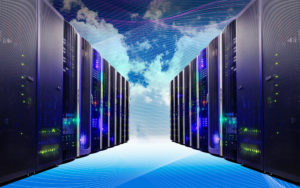 In today’s interconnected world, there are so many online threats that it’s only a matter of time before an organization suffers an outage. Having an effective disaster recovery plan is critical for resolving breaches and service failures. However, IT resilience is essential for keeping an organization’s data intact and business in operation.
In today’s interconnected world, there are so many online threats that it’s only a matter of time before an organization suffers an outage. Having an effective disaster recovery plan is critical for resolving breaches and service failures. However, IT resilience is essential for keeping an organization’s data intact and business in operation.
The old state of manual, hands-on IT resilience — where on-call personnel and secondary physical data centers ruled — is quickly giving way to a newer, cloud-based IT resilience paradigm. Thanks to cloud-based automation and virtualization, as well as ongoing developments in the cloud and its associated infrastructure, businesses are able to stay up and running in the face of any malicious attack or service outage.
Traditional vs. Modern IT Recovery
Not all disasters are created equal, and each disaster requires a unique problem-solving approach. Whether it’s an inadvertent power failure or a malicious ransomware attack, these events can easily wreak havoc on business operations.
IT teams that rely on traditional disaster recovery usually operate under a reactive state, often falling behind the curve when it comes to responding to various breaches and outages. These teams can be tied up with time-consuming manual configurations and deployments of essential data center equipment, which often means that the testing and duplication of critical data systems leaves something to be desired.
In comparison, modern IT disaster recovery facilitated by the cloud and cloud-converged infrastructure allows IT teams to work in a more proactive manner. IT teams can snapshot and replicate entire data systems with relative ease, and virtual environments can be brought online for testing purposes or during times of actual disaster. This proactive approach allows IT teams to assess their disaster preparedness instead of waiting for an actual disaster to gauge their effectiveness.
Resilience Means More than Just Recovery
With a growing number of businesses conducting their operations solely within the cloud, companies need more than just disaster recovery. Sustained availability is also crucial, along with agile service delivery, data protection, archival capabilities, and cybersecurity. IT resilience offers not just recovery, but also protection and prevention when it comes to downtime.
The transition from traditional on-premises servers and other physical hardware has opened new doors for today’s highly virtualized businesses. Instead of IT teams working around the clock to rebuild and reconfigure servers, these teams can use automated systems and processes to create virtual servers during a disaster. Instead of dealing with the complexities involved in backing up and recovering entire operating system environments using traditional methods, virtualized servers allow a more simplified approach towards backup and immediate recovery.
Transitioning Towards Cloud Convergence
A growing number of experts are seeing hyper-convergence — the merging of storage, compute, software, and networking in to an often-proprietary private cloud solution — as a solution to the problems faced by legacy on-premises infrastructure. Unfortunately, hyper-convergence also suffers from the same problems as legacy infrastructure, as evidenced by the need for additional hardware and budgeting for maintenance.
Cloud convergence moves storage, compute, software, and networking entirely to the cloud, completely removing the need for expensive infrastructure. With cloud convergence, only one instance of the software and hardware is necessary to administer current IT workloads. Cloud convergence, combined with Disaster Recovery as a Service (DRaaS), allows smaller businesses to take advantage of the cloud’s scalable nature to achieve a level of resilience previously enjoyed only by enterprise-level organizations.
Contact us to learn how eXemplify’s disaster recovery solutions can help make your business more resilient in the face of disaster.